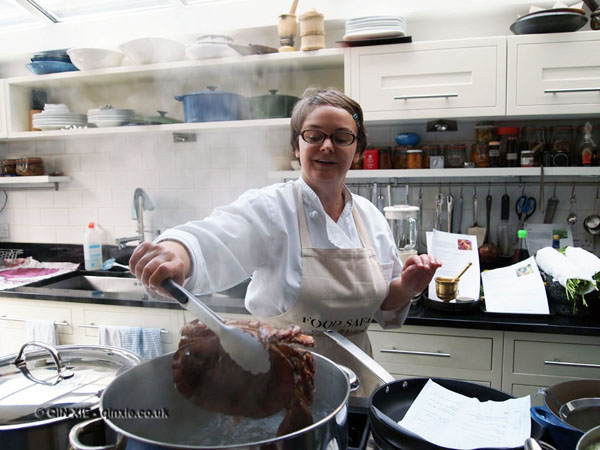In January I started the Two Term Diploma at Leiths School of Food and Wine. It seems that after 12 years at school, three years at university and six months training to be a journalist, I was back to where I started: at school. But that’s not necessarily a bad thing. I saved up and signed up for the course to gain a solid foundation knowledge about cooking. This, I figured, would help me to improve my writing about food and drink and focus on the finer details. The days speed by when you’re cooking all day and writing all night. I’ve already completed a month on the course – time to share a few of the things I’ve learned so far.
Speed – it comes from preparation:
The thing that I really worried about before starting the course was being able to cook at speed. At home, I cooked for pleasure and at a leisurely pace – not something chefs have the luxury of doing in the kitchen. In the first few weeks I struggled to finish on time. Then I realised that the reason why the students doing the full Diploma were so good was because they had everything they needed ready and knew what they were doing. When I started doing the same, I got a whole lot quicker.
Organisation – it’s part of your preparation:
One of the most tedious and time consuming aspects of the course is the time plan, something I haven’t had to do since Food GCSE at school. It’s basically a piece of paper with all your ingredients and instructions on, including what you should be doing when. As annoying as it is to do, it is incredibly useful in helping you to be organised. Of course, it’s no good if you don’t know what’s on it so you need to absorb as much of it as you can. In the kitchen, it should only be a frame of reference rather than something you look at every two minutes.
Presentation – from mise en place to plating up:
When you cook for yourself, family and friends, flavour is generally more important than presentation. But sometimes even when you put together a considered arrangement on a plate, it somehow doesn’t look like it would in a quality restaurant. Perhaps that’s because the very premise of restaurant food is that it needs to be presentable so from the outset, the food is prepared and cooked in a specific way. For example, the presentation side of fish is always cooked first, the knuckles on poultry are always trimmed, any exposed bone is always scraped clean and so on. Your beautifully presented dish really started with perfect preparation and careful cooking. That said, don’t forget to do any post-processing before you serve it.
This one is probably the oldest nut of wisdom in the book but it’s very true. It’s not just about hacking a carrot any old way though, you have to roll-slice it. That is, leaving the tip of the knife on the chopping board and lifting only the heel of the knife so you can push forward and down to cut in a rolling motion. In essence you’re moving the blade through the food rather than straight down which makes chopping a lot easier and cutting yourself much less likely. Admittedly it’s not the most natural movement to start with but with practice it does work. You will need a very sharp knife and chefs’ knives are exceptionally sharp – much more so than regular knives it seems. But don’t fear your knife, you’re more likely to cut yourself while cleaning it.
